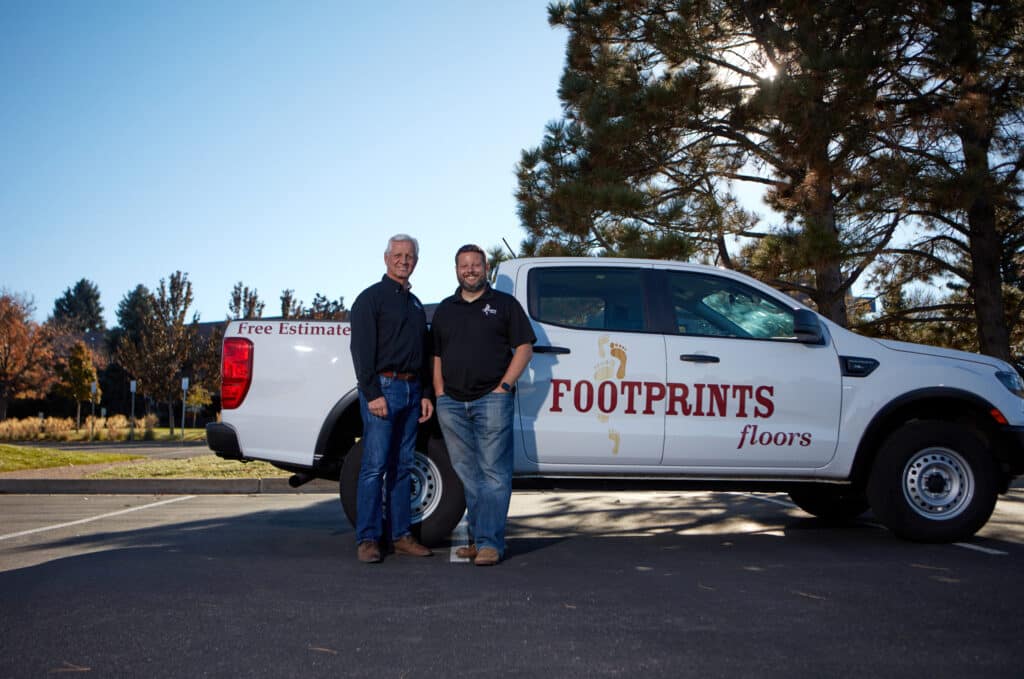How to Evaluate Profitability for a Franchise Business Opportunity (According to Franchise Sales Organizations)

As a franchise owner candidate, the question of “How much money can I make with this franchise?” should be burning in your mind from day one of the franchise discovery process, and for good reason. You’re investing a lot of money, and you want clear expectations for when you will see your return on investment (ROI).
And while data on franchising makes it clear that there are four distinct factors contributing to your success as a franchisee, the factors directly relating to a brand’s profitability and financial performance are some of the most important and easiest to assess early on in the franchise discovery process.
It goes without saying that most business-savvy investors who open a franchise do so because of the numbers. But it takes quite a bit of expertise to take financial performance data and draw from it what’s needed to make accurate predictions about your future. This article offers some insights and tips from Raintree’s seasoned franchise development experts.
In an earlier article, we explained how early franchise system abuses by unscrupulous franchisors in the mid-20th century led to a slew of federal regulations. Legislators placed strict requirements on how and when franchisors must disclose their financial performance to better protect franchisees.
In the industry, we refer to these types of financial disclosures as “Financial Performance Representations” (FPR). In a brand’s Franchise Disclosure Document (FDD), these financial disclosures can be found under Item 19. If a franchise representative is found to have made an illegal FPR to a candidate (i.e.: an email from a franchise rep to a candidate that says “John Citizen, you should be able to easily make $1 million in profit as an owner!”), the franchisor is legally liable and can face severe fines and even jail time. As a result, most franchisors take these legal obligations seriously.
While not all franchise business opportunities are low risk or offer the potential for a high ROI, all franchisors are legally obligated to disclose only accurate financial data to you in their FDD. And there are steep legal consequences for brands that don’t.
While many franchisors opt out of disclosing financial performance data in their FDDs, you’re still not flying blind when considering a brand without an Item 19. All you need is a strategy for making sense of whatever information you have available.
And these days, buyers and investors have different expectations when accessing financial performance data thanks to how easily we can share and find information online.
Over the last several years, our franchise consulting experts at Raintree have witnessed pressure on franchisors to provide more detailed and transparent financial performance data. A common ingredient for the most transparent franchisors is the full disclosure of profit & loss (P&L) representations for corporate and franchise locations.
To qualify for Raintree’s brand portfolio, a brand must provide us with enough information to demonstrate a strong ROI. After years of vetting brands, our franchise development experts have found that there are three common scenarios you’ll likely find yourself in when evaluating a brand’s financial performance:
- Scenario 1: The Franchisor makes no financial performance disclosure of any type in their FDD
- Scenario 2: The Franchisor discloses gross revenue performance of the corporate and/or franchise locations
- Scenario 3: The Franchisor discloses profitability representations of the corporate and/or franchise locations – typically in the form of P&L(s)
The following sections go scenario-by-scenario, offering a crash course on assessing profitability under each set of circumstances.
1. Perceived legal risks
The number one reason franchisors are often skittish about answering financial performance-related questions is that it’s not difficult to unintentionally disclose financial information in ways that can be deemed misleading, potentially putting the brand in hot water.
Because the legal penalties for inaccurate or misleading FPRs are so steep, regardless of the franchisor’s intentions, some quality brands have good reason to exercise caution, especially when they’re young. Many emerging franchise brands have years of experience in running their business, but they are new to the responsibilities and legal obligations of being a franchisor.
An example here: I’m the franchisor of a brand called Voodoo Brewing Co. While we have 15 years of financial history from several corporate locations, each showing excellent revenue and profitability, ethically it didn’t make sense for us to disclose that in the FDD. The reason is that the corporate locations are a slightly different model than that of the franchise locations. Suggesting new franchisees could hit those types of numbers might not ring true. We want to make sure we don’t mislead or set the wrong expectations of our new franchise owners – so we decided to hold off on an Item 19 until we have 12 months of franchisee performance to demonstrate.
2. Regulatory constraints
Some franchisors are not legally permitted to enter any information under Item 19 (yet). This is especially common for brands under two years old, which may just be compiling enough information to justify the inclusion of Item 19 in their franchise disclosure document. Another possible cause was the pandemic shutdowns when several businesses closed for anywhere from a few months to over a year.
Even if there were sales numbers available for previous years, the lack of consistent financial reporting due to differences in operating times and uneven state laws led to brands not being legally permitted to include anything in their FDDs on franchise sales over the previous years.
3. The numbers just plain suck
Never assume that you do not see an FPR because of an abundance of legal caution or regulatory constraints. In my experience, not all but a good number of franchise brands deliberately omit franchise performance representations because they believe them to be underwhelming, thus potentially hindering their ability to recruit new franchise owners. That doesn’t bode well for you as a franchisee applicant. And when it becomes clear that this is the reason for the omission, we take a hard pass on the brand.
Option 1: Ask a Franchise Owner!
When there is no FPR in Item 19 of the FDD, understanding ROI potential will require a little more work on your part.
The most obvious solution is to ask a franchise owner directly about the financial performance of their franchise business. And while Item 20 of the FDD includes contact information for all franchise owners in the system, don’t make the mistake of reaching out to franchisees immediately.
Understand that a brand might have dozens or even hundreds of franchise applicants going through the vetting process at any time. If these franchisee candidates all started reaching out to current franchise owners, their phones would be ringing off the hook, distracting them from the time they need to put towards running their franchise businesses.
For this reason, most brands include a stage in the franchise candidate’s process called “Validation,” when franchise applicants can meet with current owners. Validation typically comes a step or two after the FDD review. So, when you realize you have no FPR to work with and the brand doesn’t give you a green light to start dialing, you might just have to be patient and let that question burn in your mind until you reach the validation stage.
Option 2: Use the Item 19 of Competing Franchise Brands
California, Indiana, Minnesota, and Wisconsin are four states that publish FDDs publicly. Chances are that one or more of a brand’s competitors’ FDDs include Item 19, and so, when a brand doesn’t list FPR data, I’m generally pretty successful at finding a workaround by locating a competitor’s financial performance data through state-specific FDD databases:
Once you have the Item 19 of competing brands, you can at least better understand the financial potential of the industry itself, along with the range of associated revenue and profit data. And when armed with these numbers, you can compare financial performance by asking specific questions to the franchise owners in validation.
There are legitimate reasons as to why a franchisor would provide you with only gross revenues performance.
Indeed, I’ve analyzed some franchise brands that only disclosed top-line sales. While this information alone doesn’t tell me much, after “getting under the hood” of these brands, I ultimately discovered in a handful of cases that the brand had average profit margins of over 30% – something they should have been screaming from the rooftops. Still, for whatever reason, they weren’t.
A common reason is that the brand is a younger franchise and hasn’t yet refined accounting processes to the degree that would allow them to collect P&L data reliably from franchise owners.
So, while including only top-line data alone doesn’t tell you much, it still shouldn’t mean that you give the franchisor a pass here. But you’ll need more information to make an informed decision. As with excluding Item 19 entirely, only showing gross revenues can be a strategy poor-quality franchisors use to conceal the fact that you’re getting a bad deal.
Once again, you’ll need to ask franchise owners to confirm their gross revenues and net profitability. In this phase, if you find that the franchisees are reporting lower revenues than what the Item 19 depicts, you might find that the franchisor is only providing a certain subset of locations in order to make the numbers appear stronger. For instance, they can mandate “average revenues” but only be reporting *stores open from more than 3 years and who are in a certain region.” Always read the fine print of an Item 19 FPR, and confirm with franchisees during validation.
How to uncover profitability with gross-only revenue FPRs
Let’s unpack some of the specific-cost-related questions you’ll need to answer to be able to deduct all expenses a business might have, therefore leaving you with a reasonable estimation of profitability:
- Labor
- Try to compare to franchisees in your state or near your market. Labor varies greatly from region to region.
- Cost of Goods Sold (COGS)
- Rent
- Utilities
- Benefits and Taxes
- Franchisor Fees – Royalties, and all Ongoing Fees as represented in Item 6
- Insurance
- Vehicle
- Travel
- Auto
- Debt Service
- Depreciation
Again, the best way to verify some of these line items is to ask the franchise owners themselves.
These days, thanks to the proliferation of online content, buyers and investors expect to access all the financial performance information imaginable with a few clicks of a button. There aren’t many questions that don’t offer answers online.
For this reason, over the last few years, franchisors have been pressured to ensure they provide a detailed and transparent FPR in Item 19 of the FDD. In the last few years, I have been starting to see a common ingredient in the number of truly elite franchise brands: highly detailed FPRs. Typically, these include full P&L corporate and franchise location performance representations.
A big mistake I made early in my career was skipping P&L representations and going straight to the bottom line, or “net profit” line.
But by glossing over P&L representations, you risk either overestimating or underestimating the true profitability of the franchise business opportunity before you because by being strategic with P&L costs, business-savvy franchise owners can minimize their tax burdens. For that reason, savvy franchise owners funnel some of their profits into owner benefits, which factor into franchise profitability.
Also, while information included in P&L representations can look overwhelmingly promising, know that it’s essential to understand what the data says since it’s possible for unethical franchise brands to present this data in misleading ways. For example, sometimes franchisors list their corporate locations’ P&Ls to highlight their profitability. However, they fail to deduct the expenses a franchise owner would have (including royalty fees, contributions to the brand’s marketing fund, and other franchise-related expenses that the corporate locations do not incur) from those totals.
Even when franchise owners deliberately drive down net profits via their P&Ls, a franchise expert can still tease out embedded franchise owner benefits and quantify them as part of the franchise business model’s overall profitability.
Here’s how:
- Labor: some franchise owners will pay themselves a salary and lump it into the labor line item. In our work at Raintree, we’ve come across FDDs suggesting that the franchise owners only took about 5% in profits. But after digging in, we saw that average Franchise Owner salaries were – for example, around $200K -which brought true profitability up to roughly 20%.
- Auto: you might find the franchise owner and their significant others have shiny new vehicles used for the business. Nonetheless, this will be either a one-year expense or an ongoing benefit to the franchise owner regarding a vehicle upgrade.
- Rent: franchise businesses often pay their owners a monthly “fee” under the lease agreement, meaning that the business subsidizes the cost of the owner’s mortgage.
Other line items to dig into further include daycare, travel, and food expenses. These types of “write-offs” quickly add-up.
When you can see the true business expenses, separate from owner benefits, you gain a much clearer picture of the franchise owners’ overall profitability.
Step 1
Take the Item 7 (initial financial investment) and understand the debt obligations listed there if you are self-funding your franchise(s).Step 2
Enter in the P&L line items and input the average costs disclosed to you.Step 3
Break down and extract the Franchise Owner Benefits.Step 4
Uncover true earnings before interest, taxes, and amortization (EBITDA) performance, which allows you to more accurately predict “how much you can make”.Step 5
Forecast future years based on estimated revenues over the first few years of franchise business ownership. Pro tip: I hate to think about how many great franchise brands I passed on in the earlier years because I inaccurately deemed the brand’s profitability to be poor. Using this tool to analyze True Expenses vs. Owner Benefits will make you more likely to avoid this common newbie oversight.Bradley, Bill. “Franchise Business’s Profit and Loss.” Small Biz Club. https://smallbizclub.com/startup/franchise-center/franchise-business-s-profit-and-loss/.
Tardi, Carla. “Franchisor.” Investopedia. https://www.investopedia.com/terms/f/franchiser.asp.
Bui, T.T.H. et al. “A literature review of franchisee performance: Insights for further research.” Cogent Business & Management, Volume 9, 2022.https://www.tandfonline.com/doi/full/10.1080/23311975.2022.2044573.
“Item 19 of the Franchise Disclosure Document: Financial Performance Representations.” Franchise Law. https://franchise.law/franchise-disclosure-document/item-19/.

CHAPTER 2:
Lorem ipsum dolor sit amet, consectetur adipiscing elit. Ut elit tellus, luctus nec ullamcorper mattis, pulvinar dapibus leo.

Lorem ipsum dolor sit amet, consectetur adipiscing elit. Ut elit tellus, luctus nec ullamcorper mattis, pulvinar dapibus leo.

Lorem ipsum dolor sit amet, consectetur adipiscing elit. Ut elit tellus, luctus nec ullamcorper mattis, pulvinar dapibus leo.

Lorem ipsum dolor sit amet, consectetur adipiscing elit. Ut elit tellus, luctus nec ullamcorper mattis, pulvinar dapibus leo.

1040 S Gaylord St.
Denver CO 80209
[email protected]



